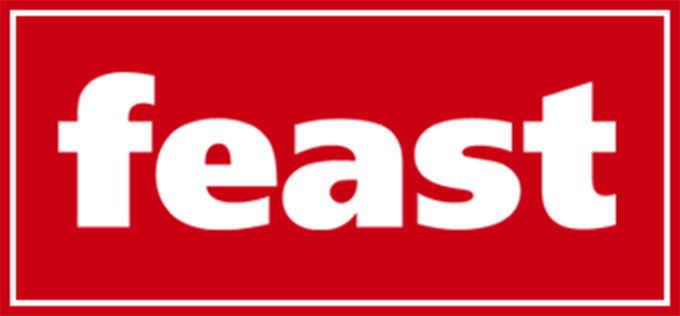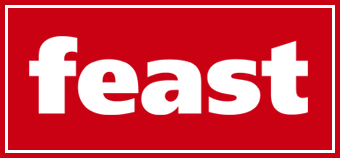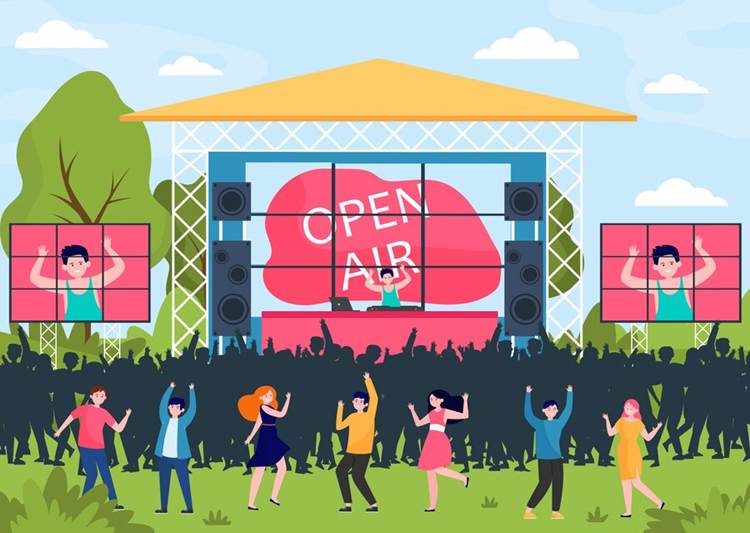Are you planning to put on a huge outdoor festival but are perplexed as to where to begin?
Organizing the stage setup for a festival is quite overwhelming, not to mention the planning that goes into making the right design, technical requirements, and countless moving parts that all need to work together seamlessly.
Any time an activity in the event planning process is overlooked, it could have an impact on the entire event and ultimately bring it to a halt.
But don’t worry—you’ve got this. All you need for a successful festival is a vision of what type of festival you are working for, a team to enact it, and knowledge of what makes the festival’s core flow.
Whether building a snuggly indie stage or an outdoor club-style environment, the experience can be intimidating, nerve-wracking, and wonderfully fulfilling.
Ready to bring your dreamy setup to life?
You can read the entire guide here, which covers how to organize a stage for your next event that is memorable, safe, and professional.
1. Define the Vision & Budget
First, ask yourself what kind of experience you want to create: A high-energy music festival? An artsy cultural fair? A blend of both?
Your vision drives everything: the artists you book, the size of your stage, the layout, and even the type of lighting that you choose. With that solid vision, you may now need to get real about your budget.
Start breaking it down—stage rental, lighting, sound system, power, crew, permits, marketing, and safety considerations. Think about what you will not compromise on and where you are willing to be flexible.
A well-structured budget helps you avoid overspending and enable you to make better choices. However, if you’re struggling to identify where to start or what’s practical for your desired concept, turning to one of the top outdoor festival stage hire solutions can be a smart move.
These professionals will bring practical insights, cost evaluation, and design ideas that can turn a rough sketch into a workable plan.
2. Choose and Map the Location
Once you’ve defined the intended goal of the festival, it’s time to pick a location that brings it to life. Do not choose the first location you see available; consider the possibility of access and flow of your crowd through the defined territory.
As you look around the space, think about where the main elements should be put together—like the stage, crowd areas, food stalls, restrooms, and emergency exits.
Is the ground flat? Is there natural shade? Can trucks easily load in gear, or is it more complicated? Are there any electric power sources around, or will you have to bring your own in the form of a generator?
Also, in the beginning, sketch a rough layout or digital floor plan that helps ensure smooth traffic flow and event safety.
Remember, your site map will be your best friend throughout planning, so it best be accurate and updated. This step transforms your festival vision into a reality and makes the place comfortable.
3. Design a Stage Setup That Matches the Vibe
Your stage is literally the heart of the festival. It is the focal point where all the actions will occur, and the magic will happen. Consider what kind of experience you want to create.
For instance, a modest riser, minimal lighting, and a warm, intimate setting may be required for a comfortable folk stage. On the other hand, a DJ night setup may require LED walls, floor-moving lights, and CO₂jets.
Position the stage depending on the crowd size and kind of venue and ensure that the people at the back have a clear view. Before the event even begins, every element, including the backdrop and lighting setup, should contribute to creating a sense of excitement and anticipation.
4. Plan Your Sound, Lighting, and Power Setup Thoroughly
A stage is where your festival starts to come alive. You must begin with what sort of sound system, lighting, and power systems you need. For a large crowd, go with line array speakers that project evenly across the field, while performers will need a solid mic setup for vocals, instruments, and announcements.
Use a combination of lighting that includes infrastructure such as front wash lights and depth lighting, as well as more expressive equipment such as moving heads, strobes or LED strips.
Regarding visuals such as LED walls or projections, carefully plan the colors or visuals forecast to avoid clashes or congestion. Also, consult an engineer beforehand to determine how much power each section requires and whether you require any backup options in case of failure.
Of all the moving parts required for a successful festival, proper audio-visual and power supply are among the most crucial. In contrast, all other things go much smoother if they are well done.
5. Build a Reliable Team and Handle Permits Early
You can’t run a festival solo—so start assembling your team early. You’ll need a stage manager who can run things smoothly, AV techs for smooth sound and lighting, riggers to build the stage safely, and a general crew for load-in/load-out.
Don’t forget medical staff and security—they’re critical. Once you’ve got your people lined up, handle the paperwork. Get local permits that cover noise level, capacity, fire department, and street closures where necessary.
Each city is different, so simply get in touch with your city government and ask them to provide you with a checklist. Event insurance is also a smart idea to get—it covers you, your equipment, and your audience if something does occur.
Having a good team and the right approval in place means you can fully concentrate on making your event great. Get this done upfront, and you’ll be glad you did.
6. Execute the Plan, Stay Flexible, and Wrap It Up Right
This is where all the planning pays off. Load-in starts—trucks arrive, gear comes in, and your stage starts taking shape. Stick to your production timeline, but be ready to make changes.
Things never quite go according to plan, and that is okay. Be open with your crew, double-check each system (sound, light, power), and conduct soundchecks methodically.
Stay visible but calm during showtime—problems are easier to solve when you’re steady and prepared. Once the final act is done, don’t forget the load-out.
Have a clear plan to pack everything up efficiently and safely. After the dust settles, do a post-event review. What worked? What didn’t? What can be better next time?
Take notes, thank your team, and save everything for the next event. Wrap-up is your time to learn and grow—don’t waste it.
Conclusion
Planning a festival stage setup from start to finish takes vision, patience, and careful coordination—but when done right, it’s pure magic.
From picking the ideal spot to honing your lighting and sound, it contributes to a memorable event. The key is to remain well-organized, surround yourself with competent people, and be prepared to change course when necessary.
Your event will shine if you take the proper approach, not merely happen. Now, it’s your turn to bring the stage to life.



